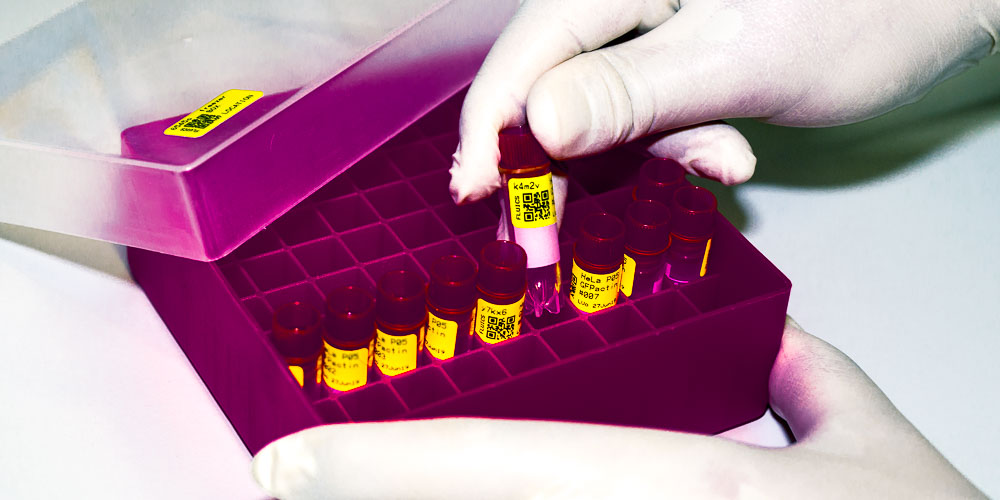Precious samples
Samples that are stored in your freezers, liquid nitrogen tanks and safety cabinets are unique and precious. It is either a lot of effort to produce or collect them, or they are expensive to buy. Typically, many different reagents such as buffers and purification resins, as well as consumables like tubes, tips, and flasks are needed to prepare the bio-samples until they finally make their way into your storage. Also, for ethical reasons, one is advised not to waste human or animal derived samples such as biopsies and blood that are used for cell cultures or extraction of antibodies.
Sample storage
Storing biological samples under frozen condition consumes significant energy. For example, a single ultra-low temperature freezer running at -80 ˚C consumes as much electricity as a household of four. The actual energy consumption also depends on how often and for how long the freezers are opened as well as how much ice is allowed to accumulate inside – a result of condensation which decreases the efficiency of cooling and increases the total energy consumption. Therefore, labs should only fill their storage spaces with well-labeled samples instead of jamming them up with poorly labeled or even outdated material.
Two main things need to be considered for quickly finding samples within cold storage units, reducing excessive energy consumption:
Sample labeling
Samples that are labeled with clear writing, resistant to mechanical abrasion and organic solvents such as ethanol and isopropanol are ideal to quickly find and identify samples inside freezers and freezer boxes. Although labeling samples by hand with a marker might seem more convenient during daily bench work, the situation changes once the samples go into storage. Using a label printer with cryo-proof labels helps to quickly find stored bio-samples. In addition, proper labeling reduces the risk of losing samples due to poor handwriting or detached labels that are floating in liquid nitrogen.
Printing QR-codes in addition to readable text on the labels allows researchers to quickly update their sample inventory.
Sample tracking
To be able to rapidly find and remove samples from storage you ideally want to know exactly where to find the sample even before opening the freezer or liquid nitrogen tank. This is where a well-maintained inventory database is important. Unless you are working in a lab where all sample-handling is fully automated and done by pipetting robots, chances are high that you are using spreadsheets such as Excel or Google Sheets to track your stored samples. Today, in 2020, this is still the case for nine out of ten life sciences research labs. In fact, spreadsheets can help to track storage locations in a simple and flexible way. However, they are tedious to keep up-to-date, prone to errors, and log changes only in a limited way.

Mobile inventory management
Over the last few years, the quality of smartphone cameras has increased tremendously such that they can now be used to reliably scan even relatively small barcodes. In combination with a mobile app – such as the FLUICS CONNECT app – the whole sample management system of a lab becomes available where it is needed: inside the lab. With a cloud-connected label printer and all lab members having direct access to the lab’s inventory, information about samples and locations can be displayed, updated and shared in real time.
Impact on saving lab resources
Keeping a lab’s sample inventory up to date is key for reducing the number of needed freezers, efficiently using valuable storage space in the lab, and minimizing excessive energy consumption from repeatedly opening cold storage units.
If you want to learn more about how FLUICS CONNECT is combining a mobile app with an internet-ready label printer to print and track cryo-proof labels with readable text and unique QR-codes schedule now your online demo.
Image credits: Roche Diagnostics GmbH; FLUICS GmbH



